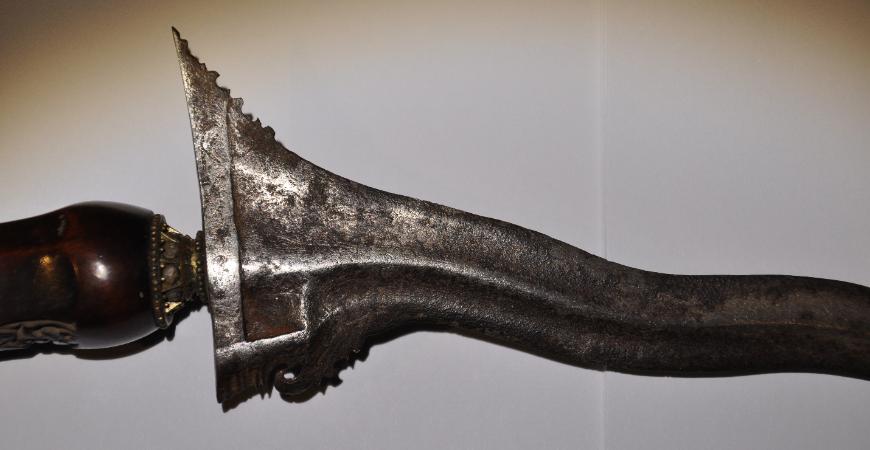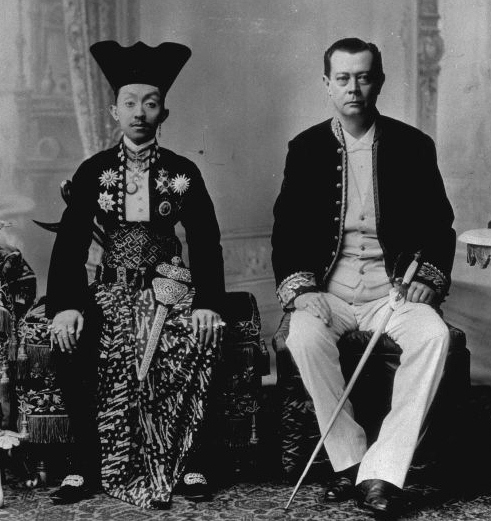
Royal Surakarta Solo Kris
Royal Princely Heirloom Kris
Palace of Surakarta, Central Java, Indonesia
late 19th century & 16th-18th century
length: 48.5cm, weight: 327g
This kris, decorated in part with the coat of arms of the royal house of Surakarta (Solo) of central Java, is a ‘brotherhood’ kris, presented by the Susuhunan (sultan) and other princes to those with whom they wish to demonstrate kin and fellowship.
The blade itself is thin and of
pamor iron with the upper blade having a gadjah or elephant head shape worked into the edge. Seemingly, the blade is not befitting the well-decorated scabbard but it is likely that the blade is a pusaka or heirloom blade, valued not for its size or shape but for its perceived ‘power’ and magical properties. The blade is earlier than the scabbard, and most likely dates to around the 16th-18th centuries.
The cross-guard (
wrangka) is in stylised boat (gayaman) form and is finely painted and gilded, front and back, with alas-alasan (mountain or gunungan and forest animal motifs which include roosters, tigers and elephants). The coat of arms of the Pakubuwono royal line comprising an oval medallion containing the sun, a star, the crescent moon and the earth pieced by a nail (paku) (to suggest that the Susuhunan is at the centre of the earth) surrounded by rice and cotton plant laurels, is at the centre of the wrangka, on both sides.
Importantly, the
alas-alasan motif is against a white background, this being restricted to krises in princely ownership (Ibbitson Jessup, 2000, p. 247).
Curiously, the part where the
wrangka meets the long section of the sheaf on both sides has been finely painted with the letters ‘G.P. / S.T.D.’ – lettering that is contemporary with the rest of the decoration. Perhaps these are the initials of the dignitary to whom this kris was to be presented.
The scabbard has a central
alas-alasan strip also against a white ground and a red-lacquered copper oversheaf to either side and running around the back of the sheaf. The lacquer on such copper oversheafs usually is badly chipped and flaked and so often re-lacquered as is the case here. (The re-lacquering is relatively recent.) The use of red here also suggests this kris’ princely provenance.
The hilt is of dark, carved wood in
nungga semi (old tree resprouting) form. The gilded metal tang ring (mendak) is decorated with applied spherical beading and set with eight faceted intan stones.
The blade fits well in the scabbard with little movement and few gaps.
A related example from the Surakarta
kraton is illustrated in Ibbitson Jessup (1990, p, 76). This piece was presented by the Susuhunan Pakubuwono X of Surakarta (ruled 1893-1939) to the ruler of Gianyar (Bali) Ide Anak Agung Ngurah Agung (1912-1960). It was presented in 1928 but by then was already old and a pusaka piece.
References
van Beek, A., Life in the Javanese Kraton, Oxford University Press, 1990.
Caravana, J.
et al, Rites of Power: Oriental Weapons: Collection of Jorge Caravana, Caleidoscopio, 2010.
Ibbitson Jessup, H.,
Court Arts of Indonesia, The Asia Society Galleries/Harry N. Abrams, 1990.
Provenance
private UK collection
Inventory no.: 1899
SOLD

The Susuhunan of Sukakarta photographed with the Dutch Resident.
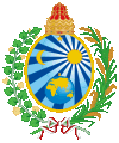
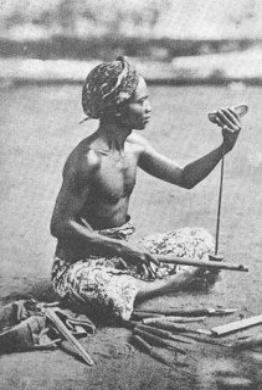
A central Javanese kris maker (empu).
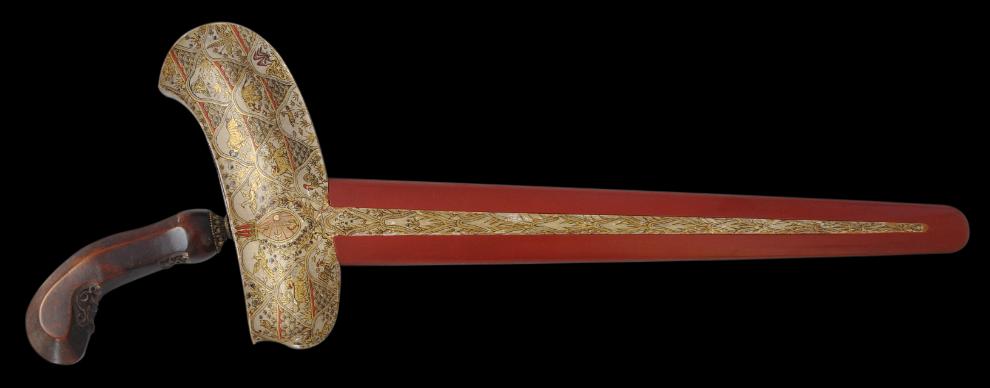
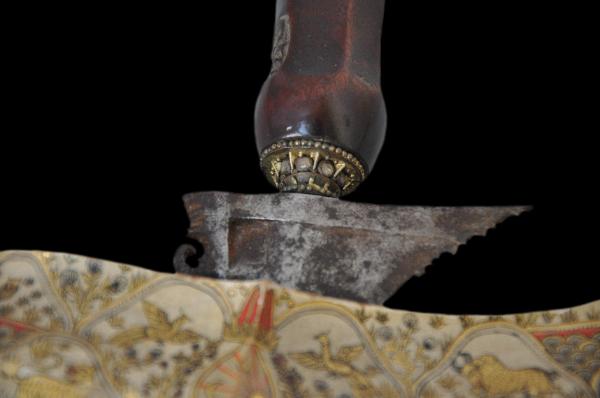
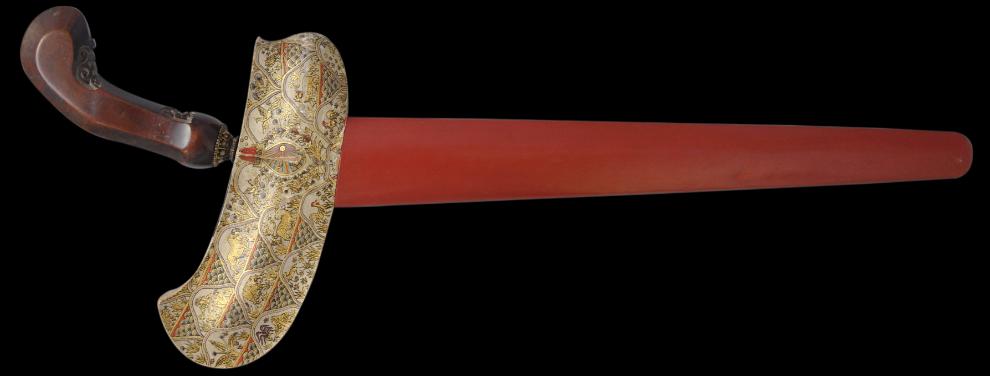
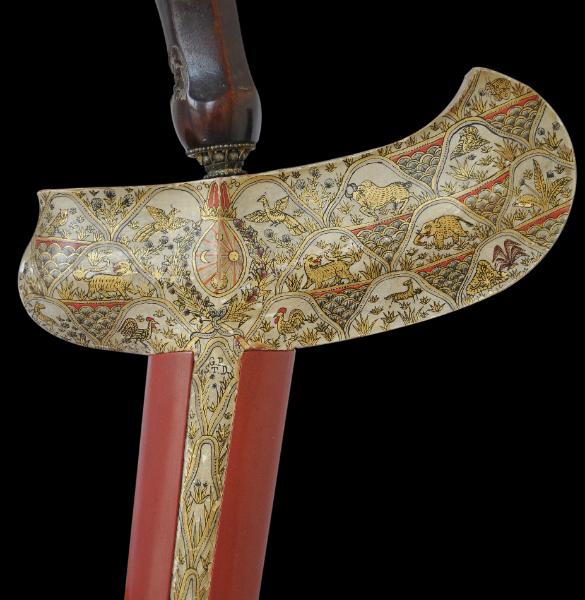
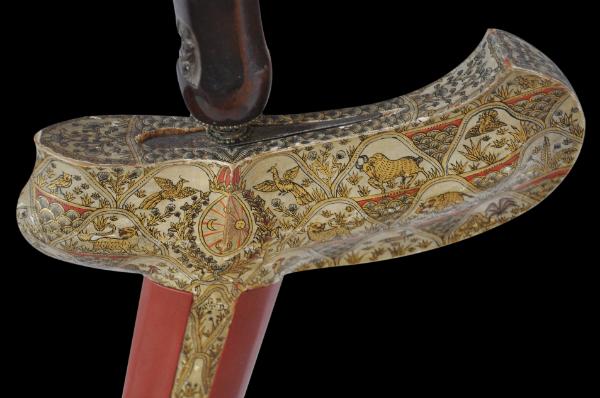
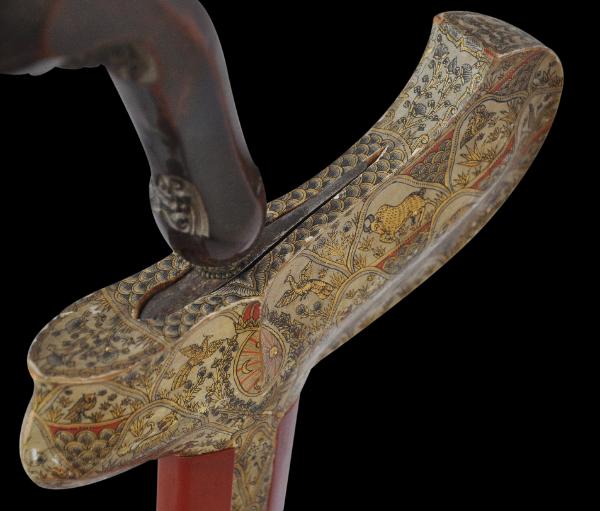
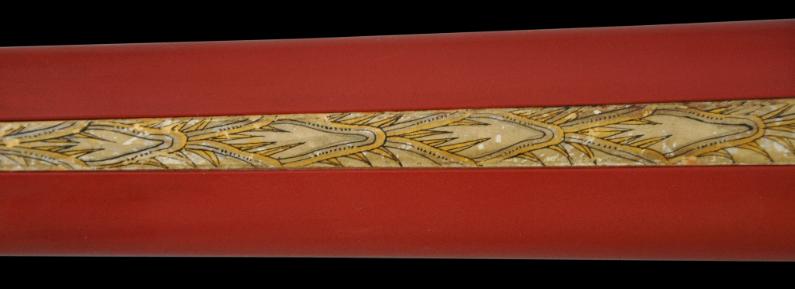
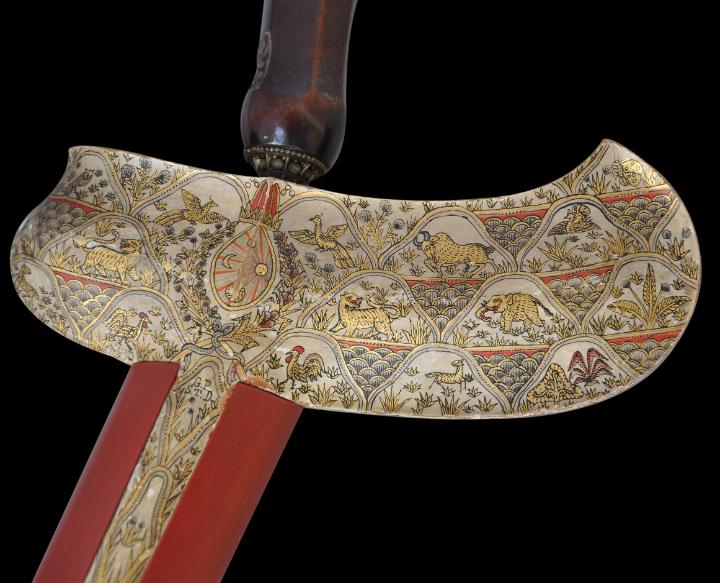
The coat of arms of the Susuhunan of Surakarta (Solo) as featured on the Kris.

